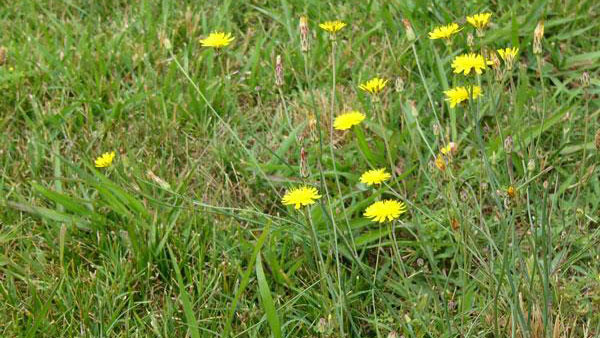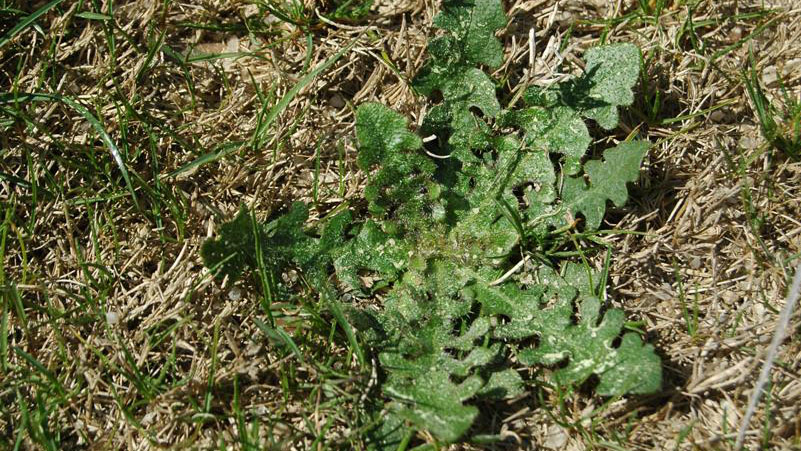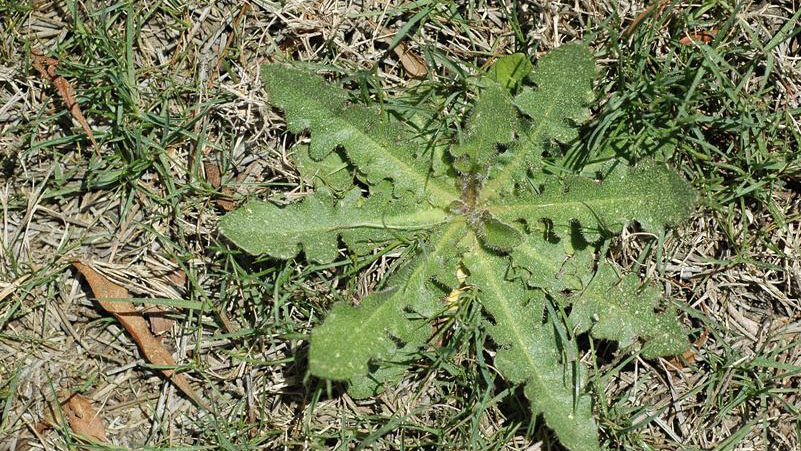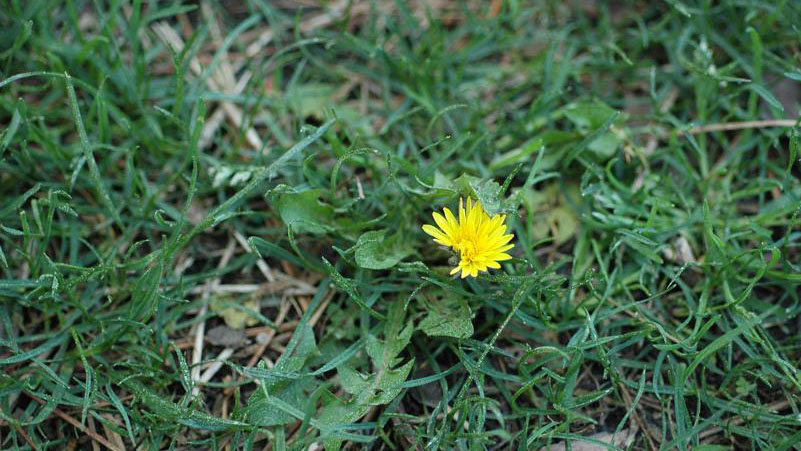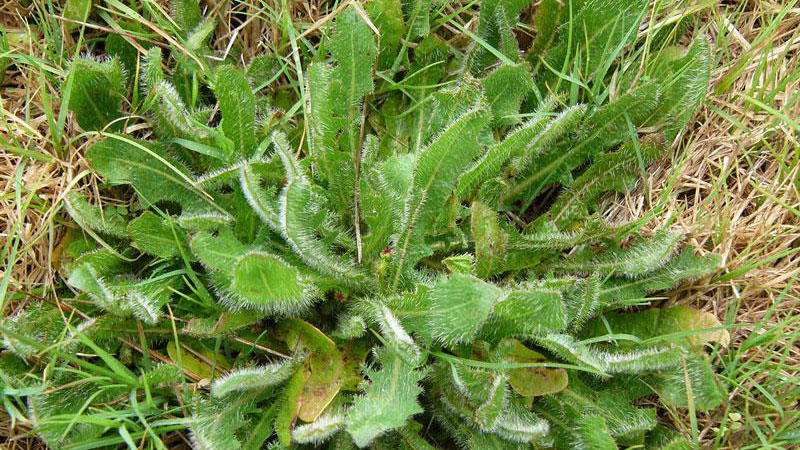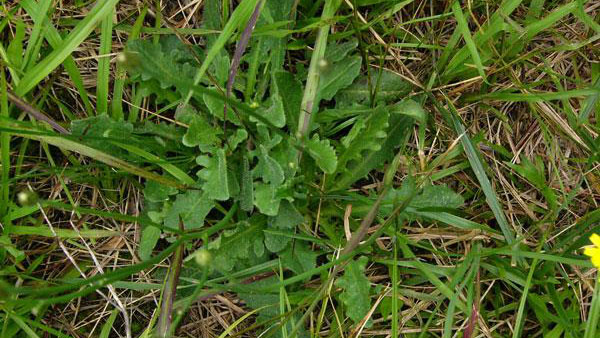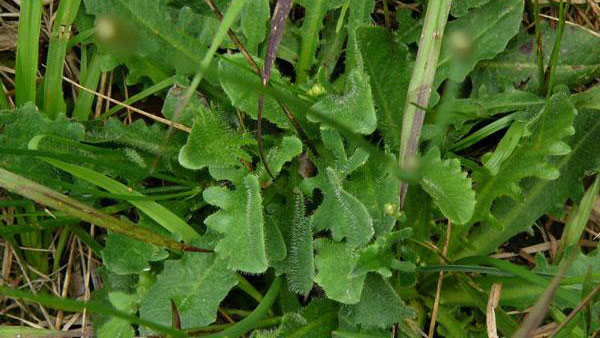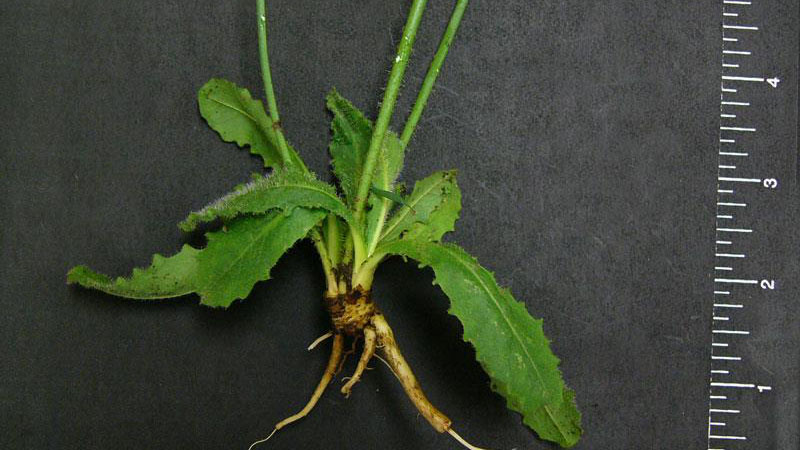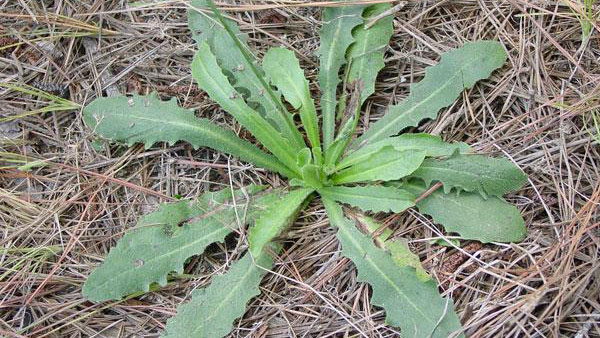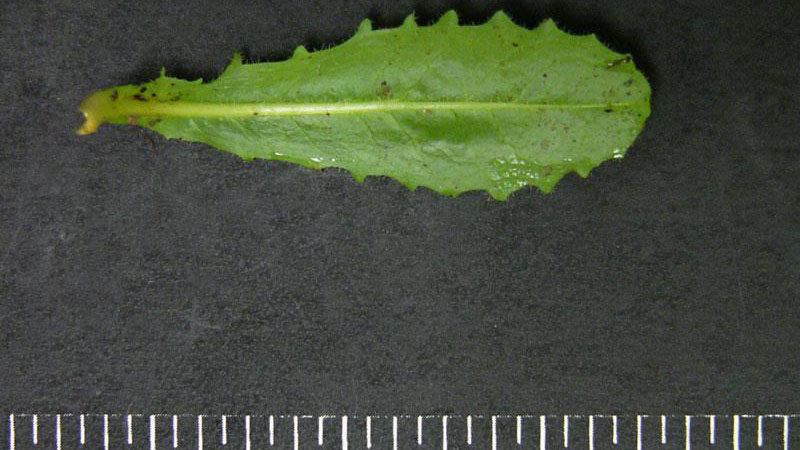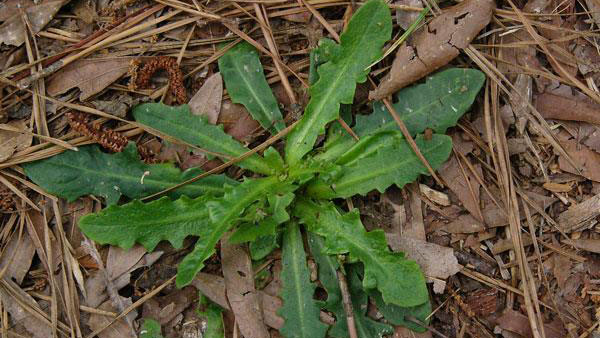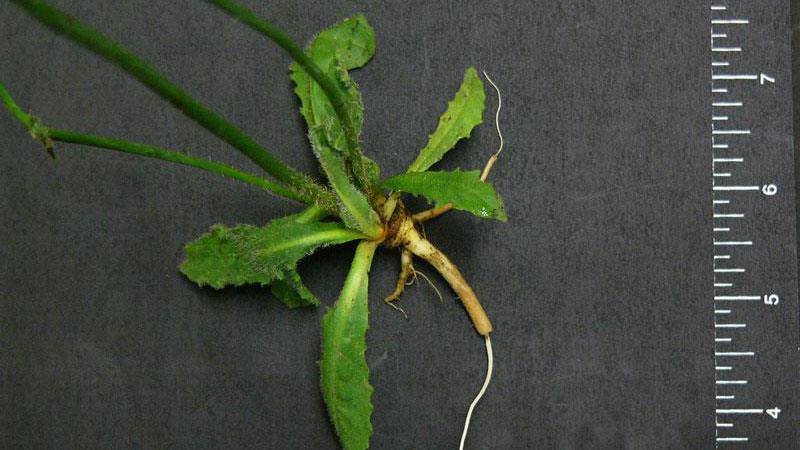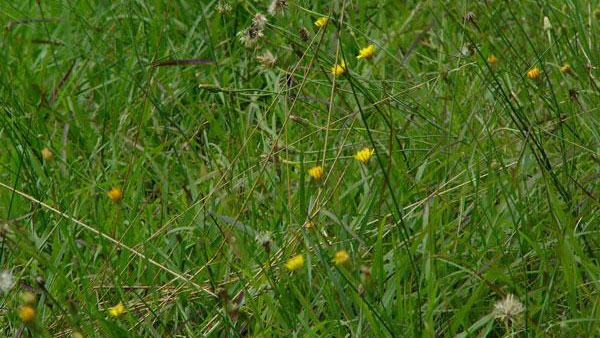Description
Cat's ear dandelion (Hypochaeris radicata) is a perennial weed that is similar to common dandelion. It has a basal rosette of densely hairy leaves with rounded lobes. This rosette arises from a prominent taproot. If broken, the leaves and flower stalks will emit a milky white sap. Most striking are the bright yellow flowers that are borne on the ends of long stems. Common dandelion plants can be distinguished because young leaves do not have hairs, whereas cat's ear dandelion leaves have dense hairs. In addition, the leaves of common dandelion are more deeply notched than those of cat's ear dandelion. On common dandelion, the leaf notches extend almost to the midrib of each leaf.
Cultural Control
Perennial broadleaf turf weeds are capable of living more than two years. They thrive in weak, thin turf; golf fairways and roughs; home lawns; playfields; and industrial grounds. Proper turf maintenance is the key to control of this weed. First, select adapted turfgrass cultivars for your area and then properly fertilize, mow, and water to encourage dense growth.
Species Data
- GROWTH SEASON / LIFE CYCLE
- perennial weed
- GROWTH HABIT
- LEAFLET NUMBER
- one
- LEAF MARGIN
- LEAF HAIRS
- upper/lower surface; dense
Figure 13
- upper/lower surface; dense
- LEAF / LEAFLET SHAPE
- oval / egg-shaped / elliptical
- LEAF WIDTH
- 1⁄2 - 1 inch
- LEAF VENATION
- pinnate
- LEAF ARRANGEMENT
- whorled or basal rosette
- ROOT TYPE
- taproot
- FLOWER COLOR
Publication date: Nov. 29, 2017
N.C. Cooperative Extension prohibits discrimination and harassment regardless of age, color, disability, family and marital status, gender identity, national origin, political beliefs, race, religion, sex (including pregnancy), sexual orientation and veteran status.

